Best Big Synths: 7 Sizable Synthesizers That Prove Bigger Is Better
Gargantuan keyboards from Yamaha, Arturia, Roland, Kurzweil, and more!
Whether you need a wide keybed, expanded synthesis options or just a massive sound, these seven big synths have what you need.
Best Big Synths
In these days of cheap and cheerful pocket-size synths, it can be easy to forget the big boys. You know, the kind of sizable synth that commands a stage with its intimidating presence and massive sound. I’m talking about the biggest of the big, the giants of the music world: synths so big you could land an airplane on them.
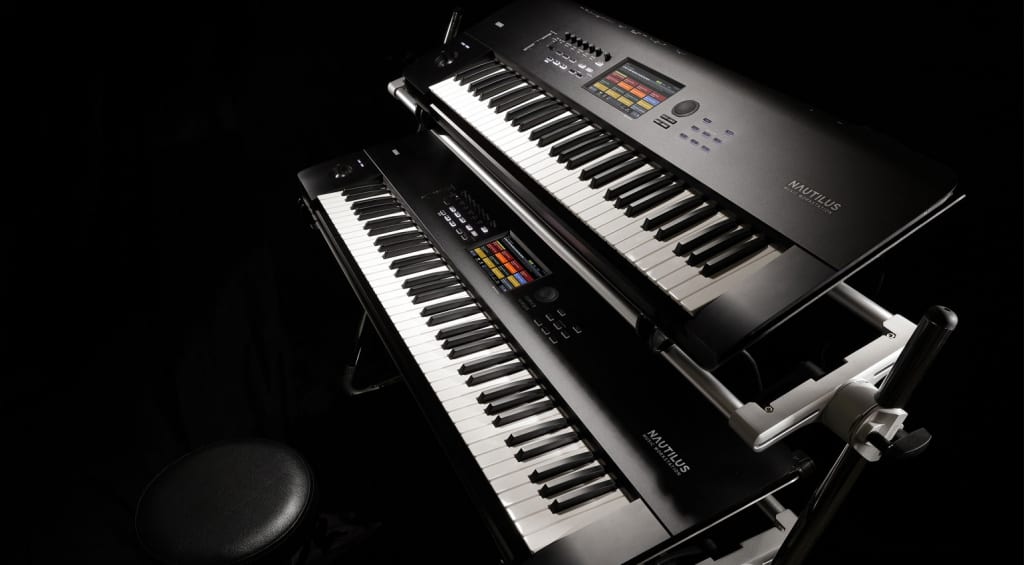
Of course, there’s more to a big synth than just sheer size. There’s also girth… of sound. Keyboards that monopolize the mix, that dominate the frequency spectrum, that saunter into the room, turn everyone’s heads and shove lesser sounds aside. The big boys. The big synths.
Whether you’re shopping for a workstation for the stage, a towering analog poly for the studio or something in-between, here you’ll find my picks for the seven best big synths on the market today. Just don’t look directly at them for too long; they’ve been known to charge when provoked.
Best Big Synth: Arturia PolyBrute 12
We can’t get enough of the Arturia PolyBrute 12 around these parts. It regularly makes it onto our best-of lists and for good reason: it’s the apex of Arturia’s Brute line of synths, the culmination of a decade’s worth of sound research.
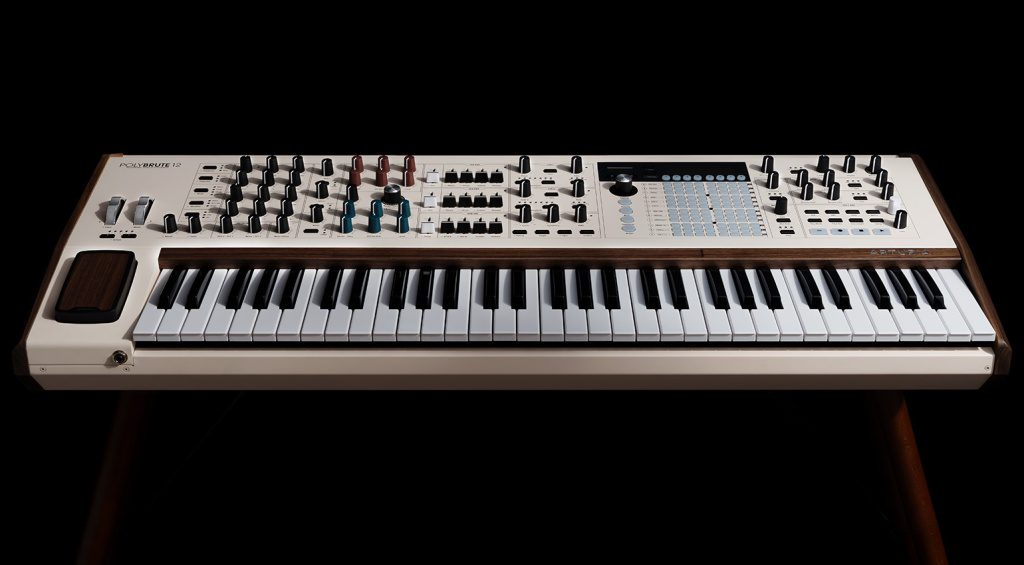
Although the PolyBrute might not be the biggest synth here in terms of size (though it’s no slouch in this department either), today I’m recommending it for the sheer strength of its sound. Behold its 12 voices of polyphony, bi-timbral morphing analog synthesis, rough-and-ready Brute oscillators and dual filters. Let’s just say that if you get into a bar fight, you want the PolyBrute 12 on your side.

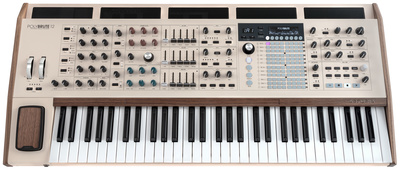
- Arturia PolyBrute 12 product page
Best Big Synth: Korg Nautilus 88
You may be wondering why I’m recommending the Korg Nautilus and not the Kronos. Well, I’ll tell you, gentle reader. The Kronos may be Korg’s top-of-the-line workstation but the Nautilus can do pretty much the same thing – and for a lot less money.
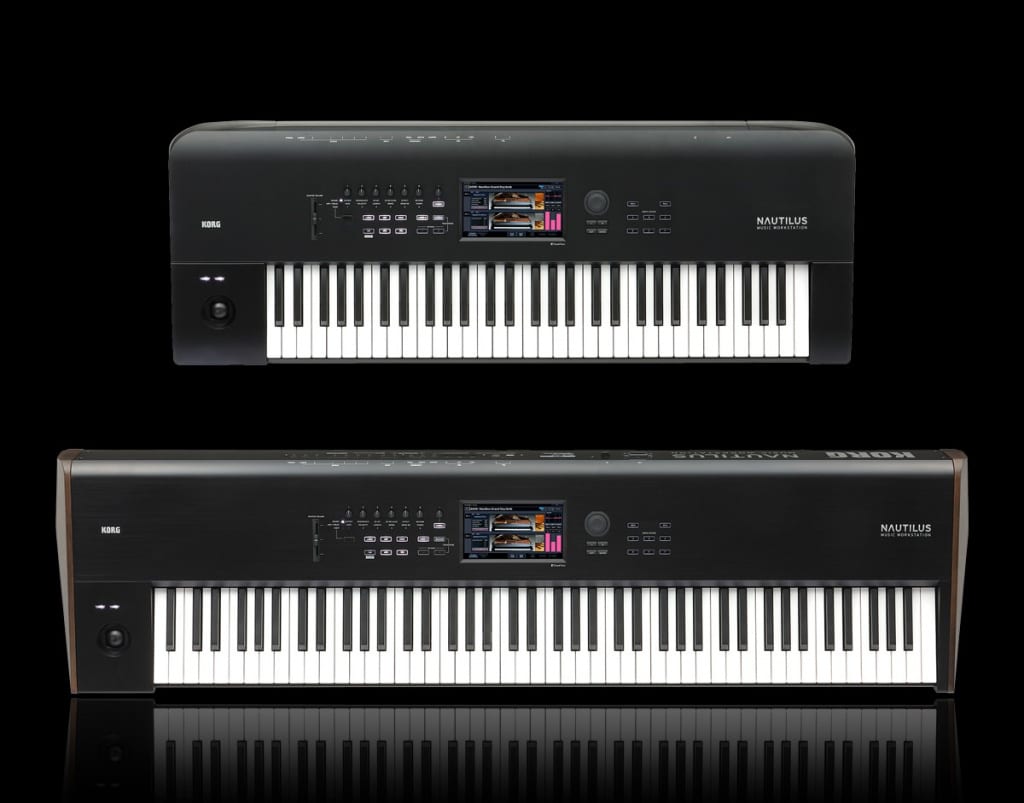
Let’s start with the sounds. Nautilus has the same assortment of nine synth engines as Big K, including virtual analog like MS-20 EX and PolySix EX to FM, physical modeling, and of course realistic piano sounds. It has less controls, sure, but I reckon you’ll be too busy playing with both hands to worry about too much tweaking.
Nautilus 88 has, as you’d expect, a full keybed, with an 88-key fully-weighted, hammer-action RH-3 keybed borrowed from Korg’s digital piano range. Truly one of the best big synths.

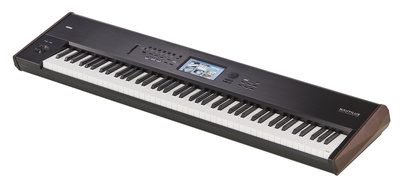
- Korg Nautilus 88 product page
Best Big Synth: Kurzweil K2700
In 1990, Kurzweil set the world of music on fire with the K2000, whose VAST synthesis architecture (that’s variable-architecture synthesis technology if you must know) really pushed the boundaries of what digital could do. The K2700 continues that legacy, with 256 voices of VAST polyphony, 4.5 GBs of factory sounds, 3.5 GBs of user sample memory (although you can only important samples), virtual analog, six-op FM, KB3 ToneReal organs, and more.
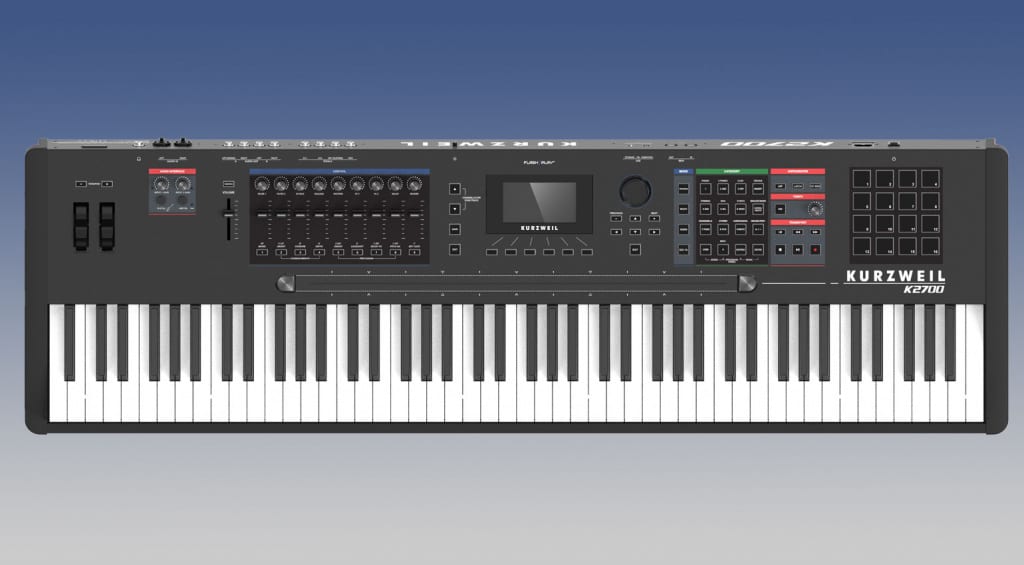
Kurzweil workstations represent a very real and exciting alternative to those put out by the big three Japanese companies. For those who fell in love with VAST in the 1990s, the extremely well-equipped K2700 is a great way to get back into the Kurzweil realm.

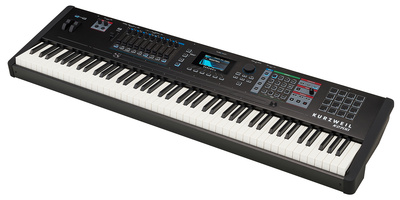
- Kurzweil K2700 product page
Best Big Synth: Oberheim OB-X8
Obie polys have always been big. You can’t help but feel dwarfed in size when standing next to an Eight Voice, OB-X or Matrix-12. The same goes for the Oberheim OB-X8, a synth big in both size and sound.
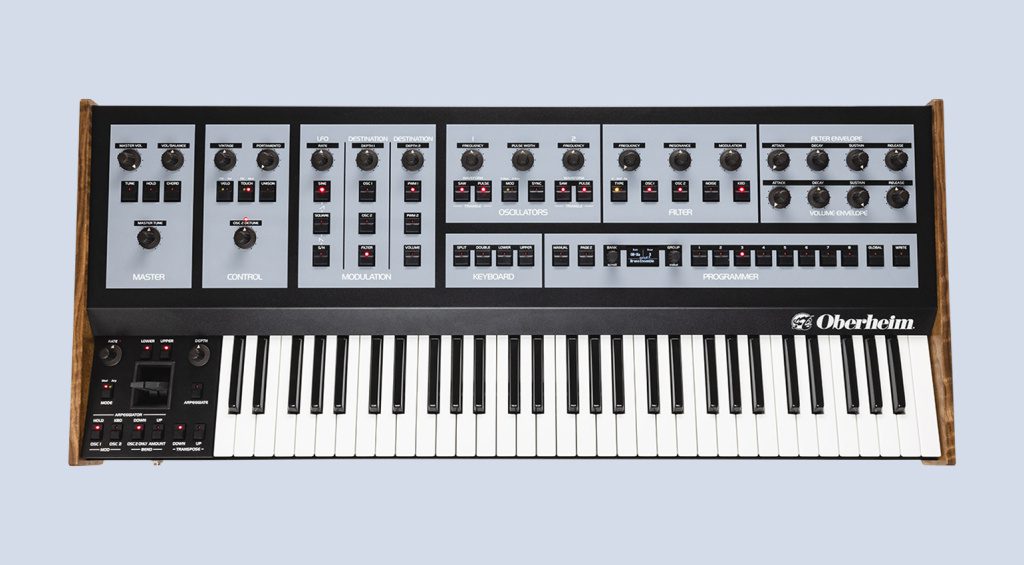
Engineered to recall the classic OB series of synths from the late 1970s and early 1980s, the analog OB-X8 offers eight voices of polyphony with two VCOs per voice, discrete SEM-lineage and Curtis filters, bi-timbrality,and a 61-key Fatar keybed with velocity and touch sensitivity.
The Oberheim OB-X8 is pretty much the best-sounding synth in the store. It also has a price to match. Go big or go home.

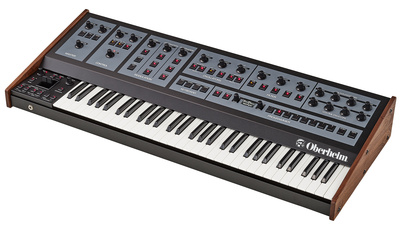
- Oberheim OB-X8 product page
Best Big Synth: Roland FANTOM 8 EX
FANTOM 8 EX is Roland’s biggest synth, its flagship model and the master and commander of the whole fleet. Essentially the FANTOM 8 with an upgrade, it adds a whole clutch of extra instruments like ACB Expansion Models of the Jupiter-8 and Juno-106 plus the company’s first wavetable instrument, n/zyme.
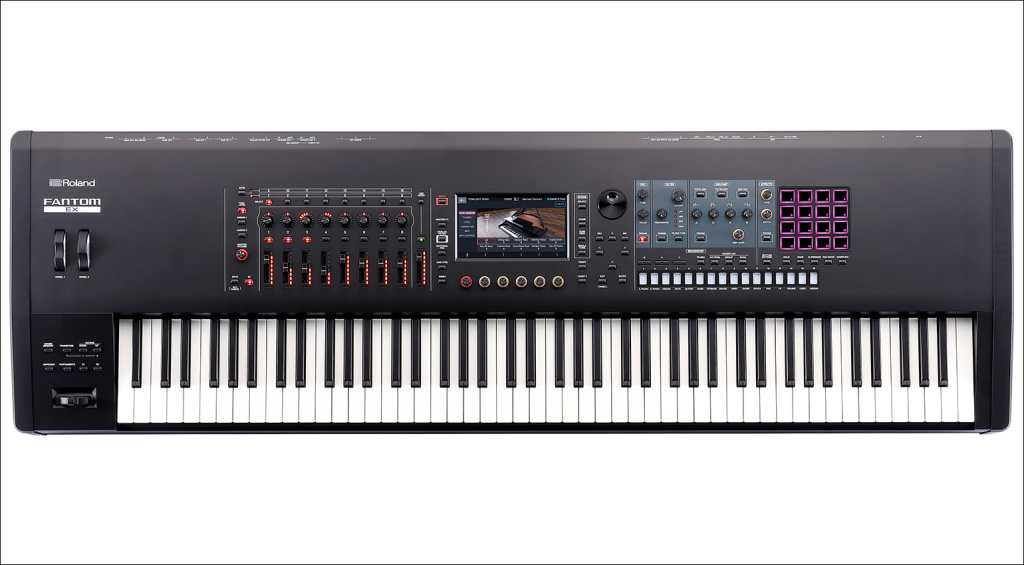
All of these new engines join the already well-apportioned FANTOM engine, which offers ZEN-Core synthesis, SuperNatural acoustic sounds, organs and sampling. It plays nice with DAWs and also wows on stage thanks to its 88-key keybed with PHA-50 Wood and Plastic Hybrid Structure with Escapement and Ebony/Ivory Feel and channel aftertouch.

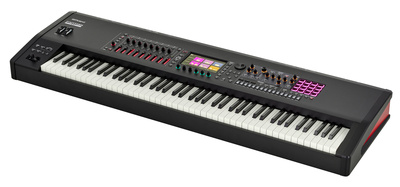
- Roland FANTOM 8 EX product page
Best Big Synth: UDO Audio Super 8
Super 8 is UDO Audio’s latest monster creation, a big synth that’s positioned somewhere between the company’s best-known Super 6 and the Super Gemini.
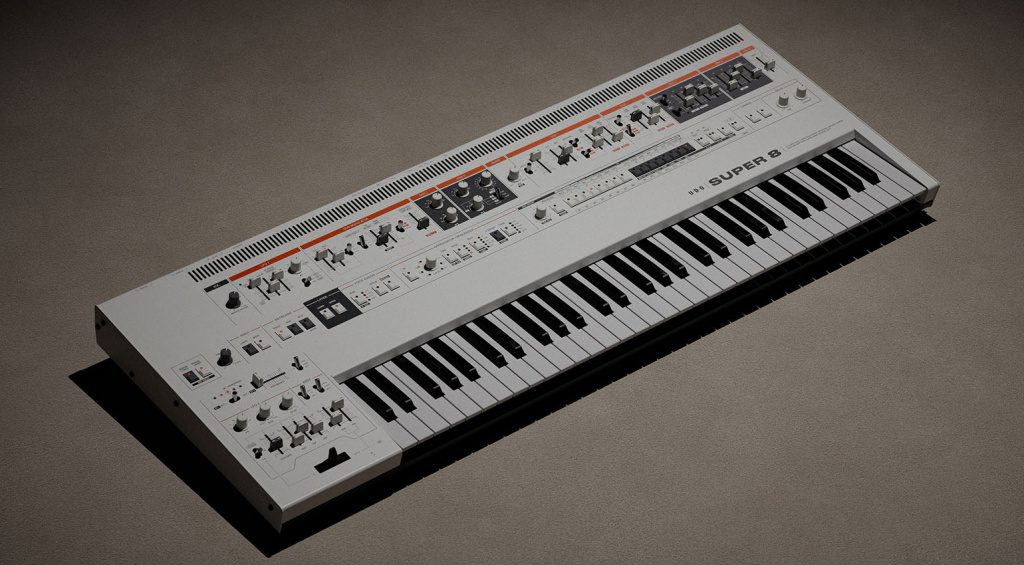
A hybrid beast, it sports 16 voices of binaural polyphony, meaning it’s essentially two synthesizers in one, each with its own independent effects chain, and is capable of being split, dualled, and sequenced. A hybrid synth, Super 8 gives you complex FPGA digital oscillators, analog 4-pole filters, and much more. The 61-note, semi-weighted keybed with polyphonic aftertouch also makes it extremely playable.
Super 8 may not be UDO’s biggest synth – that would be the Super Gemini – but I like this one for the sheer glory of its sound.


- UDO Audio Super 8 product page
Best Big Synth: Yamaha MODX8+
An upgrade of Yamaha’s (relatively) affordable MODX line, MODX+ ups the polyphony and internal storage, bringing it in line with the company’s discontinued Montage in terms of specs.
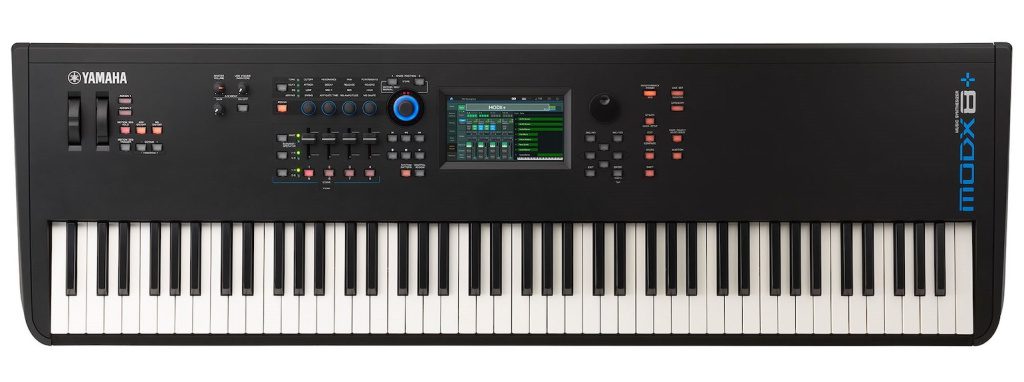
Who should buy the MODX8+? The clear target player is the person who loves Yamaha’s legacy sound engines, namely FM and AWM. Included here is FM-X, which raises the operator count to eight over the original format’s six, and adds filters. There’s also AI for morphing between different sounds. Yamaha is also known for its sample synthesis Advanced Wave Memory, and that’s represented by AWM2. It can run 16 parts, eight synthesizers, 18 filters, and nine LFOs, and offers programmable virtual circuit technology.
Gigging musicians will want the 88-key weighted-action version to best play all those gorgeous AWM2 piano, instrument and synth sounds.

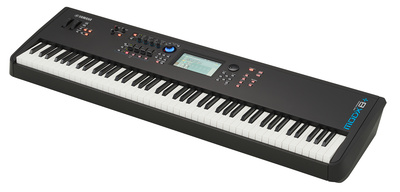
- Yamaha MODX8+ product page
More Information
- All about synthesizers
3 responses to “Best Big Synths: 7 Sizable Synthesizers That Prove Bigger Is Better”

 4,6 / 5,0 |
4,6 / 5,0 | 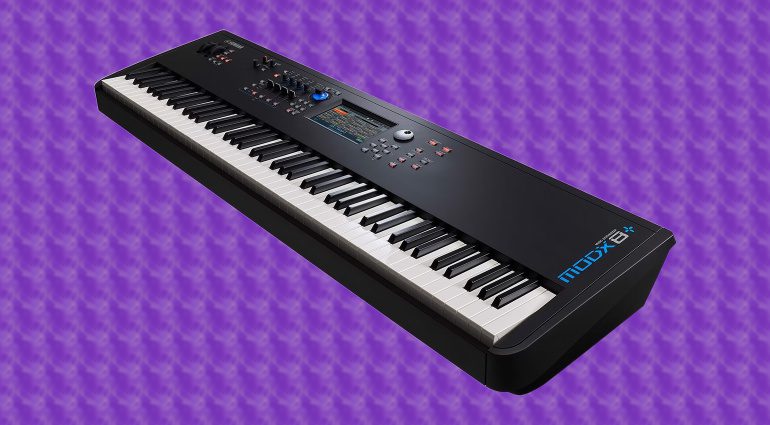


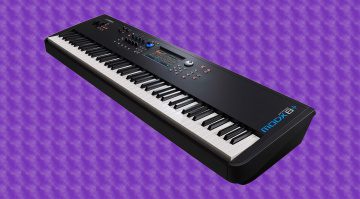

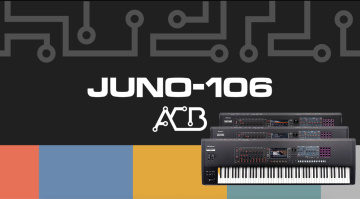
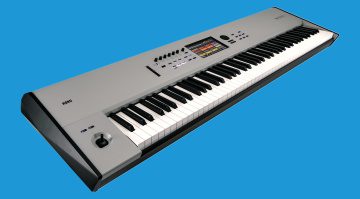
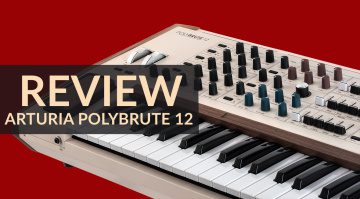
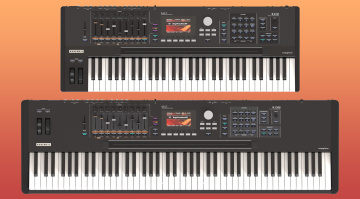

No Montage M?
Nothing from Waldorf?
Categorically, these synths are not comparable. The Nautilus and MODX offer pianos, orchestral instruments and workstation features that the UDO and Polybrute do not. The comparisons should have been between workstations or between powerful full-sized synths. Joe